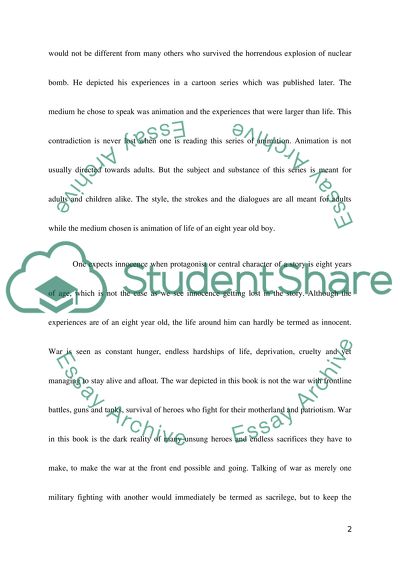Cite this document
(“How war is described in the war comic Barefoot Gen Essay”, n.d.)
Retrieved from https://studentshare.org/literature/1437557-how-war-is-described-in-the-war-comic-barefoot-gen
Retrieved from https://studentshare.org/literature/1437557-how-war-is-described-in-the-war-comic-barefoot-gen
(How War Is Described in the War Comic Barefoot Gen Essay)
https://studentshare.org/literature/1437557-how-war-is-described-in-the-war-comic-barefoot-gen.
https://studentshare.org/literature/1437557-how-war-is-described-in-the-war-comic-barefoot-gen.
“How War Is Described in the War Comic Barefoot Gen Essay”, n.d. https://studentshare.org/literature/1437557-how-war-is-described-in-the-war-comic-barefoot-gen.


